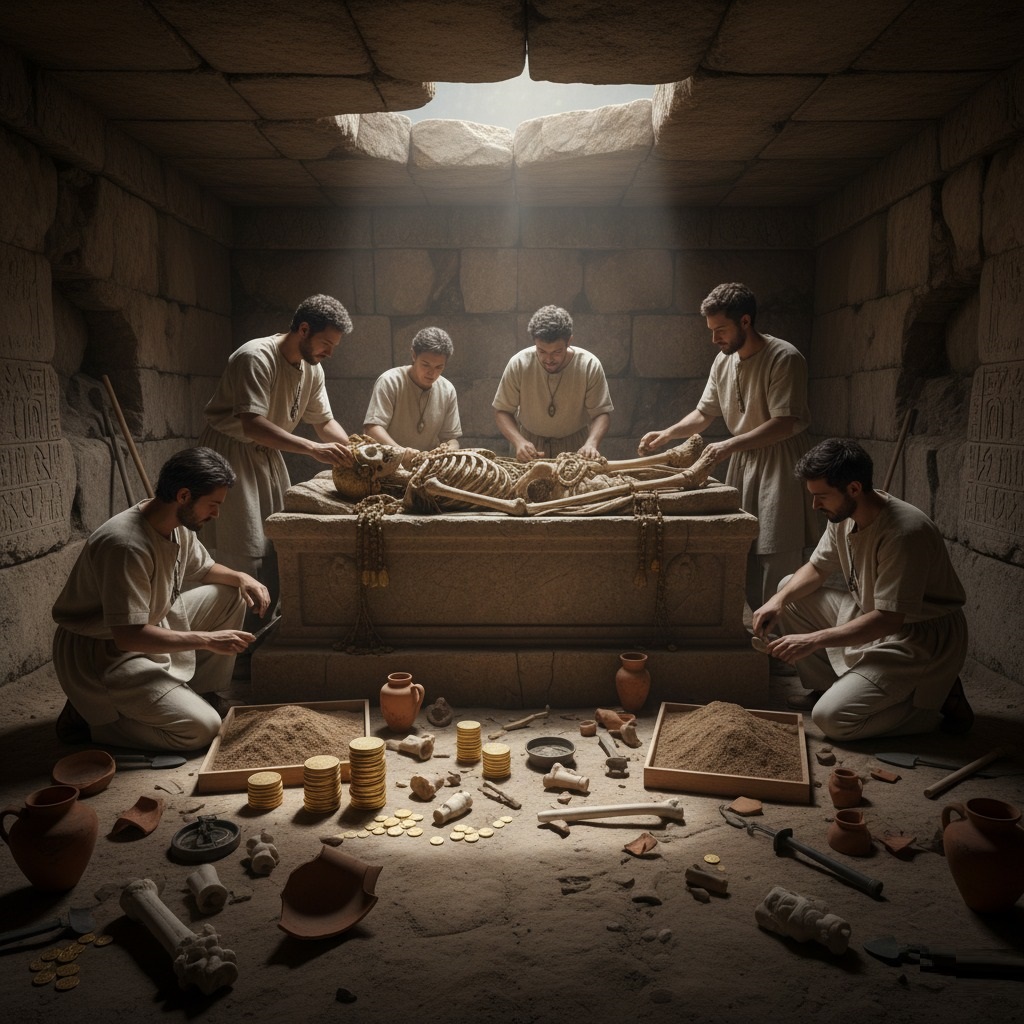Unearthing the Pharaoh’s Secrets: The Grand Tomb of Saqqara

The desert wind, a constant sculptor of the Egyptian landscape, whispered tales of millennia as Dr. Aris Thorne surveyed the recent collapse. A routine structural assessment near the Step Pyramid of Djoser in Saqqara had revealed not mere subsidence, but a gaping maw into the earth, hinting at something far grander than expected. Aris, a seasoned Egyptologist with a reputation for both meticulousness and a touch of daring, knew this was no ordinary burial shaft.
“Lower the light,” he commanded, his voice echoing slightly in the newly reinforced chamber. Below, the beam sliced through the gloom, illuminating a spectacle that made his breath catch. It wasn’t just a tomb; it was an ante-chamber, vast and unmarred by modern hands. Hieroglyphs, sharp as if carved yesterday, adorned the limestone walls, telling a story yet to be fully deciphered.
The excavation began with painstaking slowness. Each grain of sand was accounted for, every pottery shard mapped. Days bled into weeks as Aris and his team, a blend of international experts and local skilled workers, peeled back layers of history. Dr. Lena Petrova, the team’s lead conservator, meticulously documented faint traces of linen and pigment, while Omar Hassan, the resident epigrapher, worked tirelessly to translate the ancient texts. They were tracing the life of a forgotten dignitary, perhaps a high priest or a vizier, from the Old Kingdom.
Then came the day they breached the inner sanctum. The air, trapped for over 4,500 years, stirred, carrying the scent of dust and ancient resins. In the center of the chamber lay a massive, intricately carved granite sarcophagus. Its lid, despite millennia of pressure, was still perfectly sealed. The team held a collective breath as the heavy stone was slowly, carefully, winched aside.
What lay within was a profound silence. Not a curse, not a booby trap, but the stark, undeniable presence of the past. A skeleton, surprisingly intact, rested on a bed of what had once been gold leaf and precious textiles. Around the skeletal fingers were rings, their lapis lazuli and carnelian still vibrant. A ceremonial dagger, its bronze blade corroded but its hilt exquisitely worked, lay beside the hip. Gold coins, scattered as if in a final offering, gleamed faintly in the artificial light, interspersed with alabaster jars and bronze vessels.
“It’s… untouched,” Lena murmured, her voice hushed with awe. “A complete funerary assemblage from the 3rd Dynasty.”
Omar, his eyes scanning the inscriptions on the sarcophagus itself, confirmed, “The texts refer to ‘Imhotep’s Shadow,’ a chief physician and astronomer, a trusted advisor to Pharaoh Djoser, whose name was deliberately obscured in later records. This explains why he was lost to history.”
Aris knelt, not touching, but observing the delicate balance of time and preservation. “He was more than just an advisor,” he mused. “This tomb’s grandeur, its hidden location… he must have been incredibly powerful, perhaps even dangerous to later pharaohs who sought to erase his memory.”
The discovery at Saqqara wasn’t just about finding another tomb. It was about filling in a crucial gap in the narrative of ancient Egypt, revealing the story of a man whose influence was so profound that even death couldn’t fully obscure his legacy. As the sun set over the desert, casting long shadows across the excavation, the team knew they had not merely found artifacts; they had awakened a legend, bringing ‘Imhotep’s Shadow’ back into the light of history.
